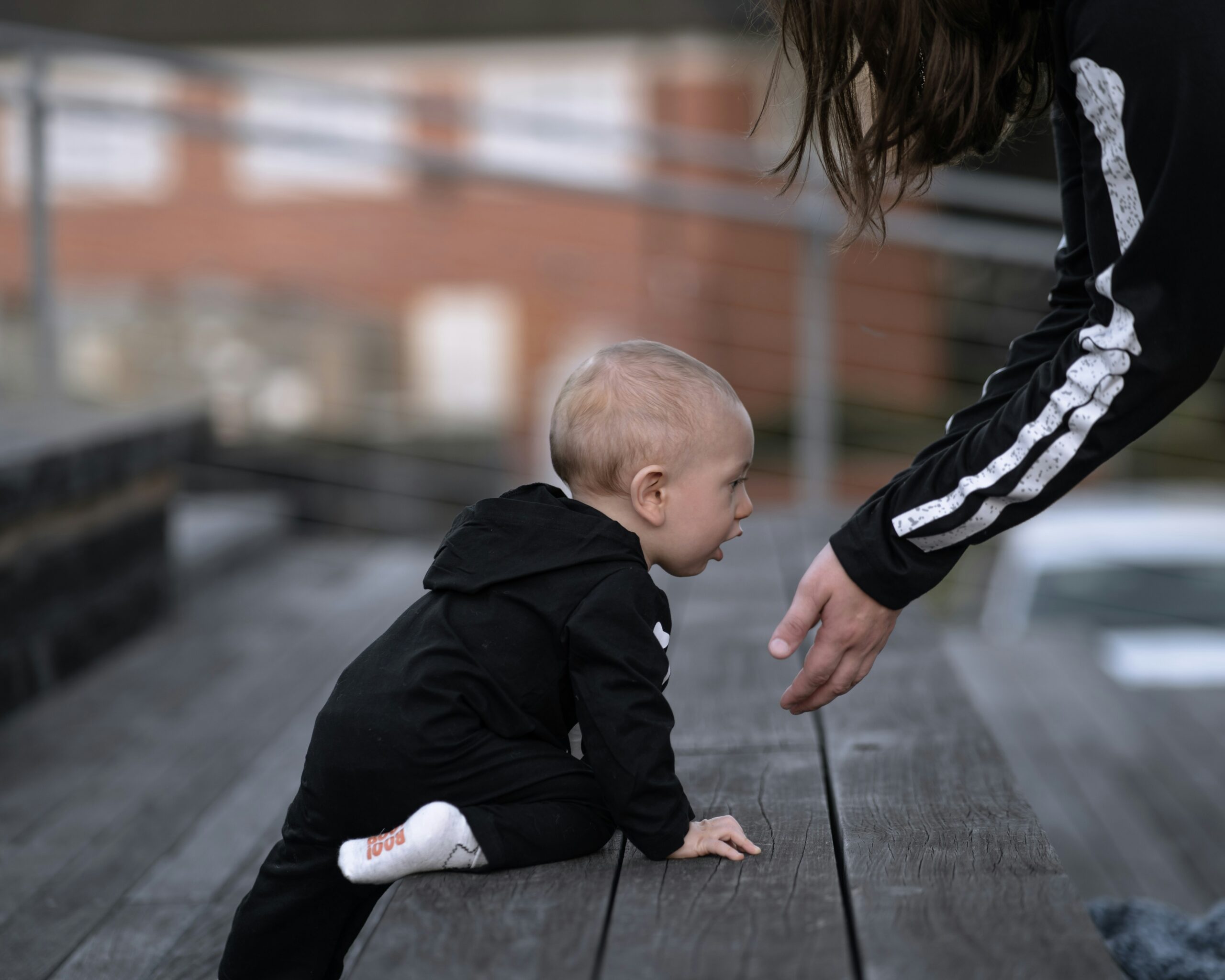As a parent, one thing you will remember for life is the first time you meet your baby. From the moment you first hold your baby, you are communicating how much you love your little bundle.
Still, being a new parent is hard. You’re sleep deprived, sore, hormonal and terrified of making a mistake. You desperately want your baby to grow into a confident, well-adjusted and happy child. However, what you actually encounter with your baby doesn’t match the latest parenting books or your ideals.
My son slept for the first few days. But, when I got him home from the hospital the crying started. Though I wanted to communicate to my son that he was safe, loved and would be cared for, I was sure the message was getting lost in translation. My son cried all the time.
Because I believed his cries had meaning, I set out to try and decipher them. After a lot of trial and error— not only with my own baby, but with hundreds of others— I discovered a phonetic sound based on reflexes that was heard within a baby’s cry. This meant that parents would be able to understand whether their baby was hungry, tired, gassy, uncomfortable or in need of a burp, purely by listening to their baby’s cries. This understanding can begin the day a baby is born.
I discovered babies had a voice that could be easily understood by their parents. Following is some insight about my findings.
Sounds To Listen For
Neh: I’m hungry
An infant uses the sound reflex “neh” to communicate hunger. The sound is produced when the tongue is pushed up on the roof of the mouth and the sucking reflex is triggered.
Owh: I’m sleepy
An infant uses the sound reflex “owh” to communicate that he or she is tired. The sound is produced much like an audible yawn.
Heh: I have discomfort
An infant uses the sound reflex “heh” to communicate stress, discomfort or that he or she needs a fresh diaper. The sound is produced by a response to a skin reflex, such as feeling sweat or itchiness on the behind.
Eairh: I have lower gas
An infant uses the sound reflex “eairh” to communicate flatulence or an upset stomach. The sound is produced when trapped air from a belch is unable to release and travels to the stomach, where the muscles of the intestine tighten to force the air bubble out.
Eh: I need to burp
An infant uses the sound reflex “eh” to communicate that he or she needs to be burped. The sound is produced when a large bubble of trapped air gets caught in the chest and tries to release out of the mouth.
Your baby doesn’t have to be crying loudly to give clear information. In fact, pre-cry sounds may even be more informative.
Other Cues
Overtired
Gestures, cries and facial expressions all play a roll in helping you to comprehend your baby before he or she can speak. Aside from listening for the tired word when your baby may be fatigued, notice if the infant’s movements have become jerky. This generally indicates overtiredness and that the baby needs to be coaxed off to sleep. Infants may also have their eyes half closed and an open “yawny” mouth.
Hungry
When infants are hungry, they often snuffle around their mothers’ breasts and make sucking motions (some parents say like a fish).
Gassy
A baby with gas most defiantly pulls up his legs and wriggles around. His face tends to get red and his tongue is flattened down in his mouth.
Babies needing to burp generally have surprised looks, and their necks tend to move slightly back.
As a baby becomes older, he starts copying parents’ sounds and gestures, which is why it’s important that parents talk and interact with their infants as much as possible.
Infants make their early attempts at words and gestures by cooing, gahing, hand sucking and squeezing their fists to gesture for a bottle. You can encourage this development by mirroring back the sound or behavior your infant makes. This can occur during you and your child’s playtime— further strengthening the bonding experience. Record what sounds and gestures your baby creates to help you decipher patterns and what your infant wants to express.

Holding your baby is also important. Holding a baby helps him feel loved and safe. The motion of rocking back and forth reminds a baby of his time in the womb, and being held up against your heart lets baby hear the familiar sound of your rhythm. Caressing their faces as they fall asleep is fantastic for babies too excited by the world to easily fall asleep.
Babies with a lot of gas need to be held upright as much as possible. This action presents a great time to communicate your willingness to always be there. Similarly, rubbing and patting their backs helps babies burp as well as comforts by emulating the rhythmic feel of the womb.
Babies love to be cuddled and look up at the faces of those who love them. As a parent, you provide baby’s first food, shelter and friend. To start life with your parents’ smiling faces is a wonderful thing, and I believe it communicates a sturdy support system to aid facing the world. Usually when you are holding your child in your arms and smiling at him, you see your baby’s first of many smiles.
Babies continue to mimic your facial expressions and be acutely aware of your moods by the tone in your voice. Babies begin to copy your speech with “goos” and “gahs.” It’s important, therefore, to interact verbally with your baby as well as visually. Often when infants are upset, the mere sound of your calm voice talking or singing may soothe them.
Communication is not just about understanding what your baby’s cries mean— it’s also about answering those needs in a nurturing way. Interact with your baby through touch, words and facial expressions. Nobody knows your baby as well as you do, and although books, videos and friends may advise, it is ultimately you, the parent, who watches over baby every day.
Remember: You will understand baby in time. Be patient with yourself and your baby. Watch, listen and trust that your baby wants to communicate with you. After all, you are the most important person in your baby’s life.




